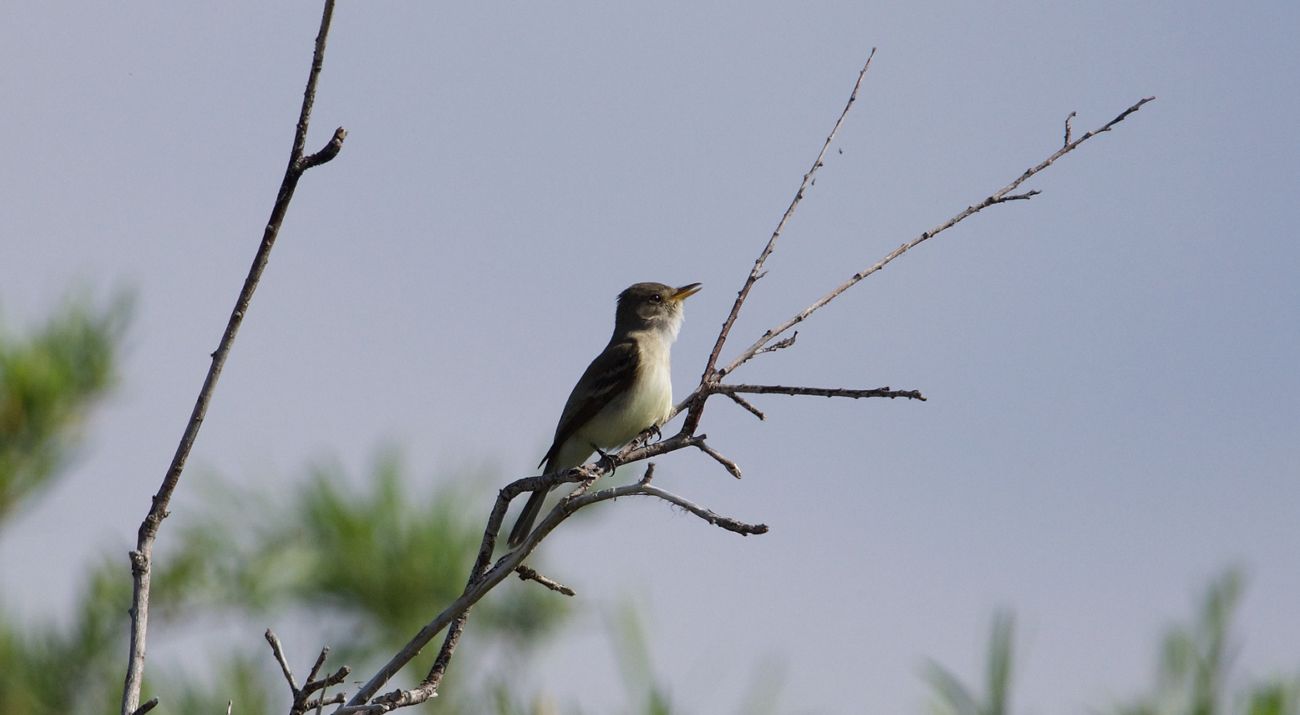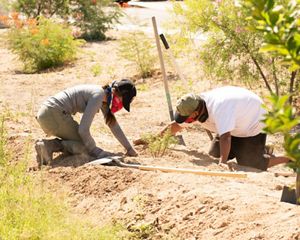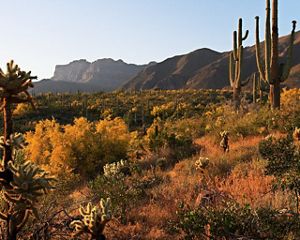
Safeguarding Arizona’s Avian Diversity
TNC has worked to restore the riparian health of Aravaipa Canyon for over 20 years, which has paid off for some of Arizona’s endangered avian species, including the Southwestern Willow Flycatcher.
Kathleen “Kit” Kleinschmidt spent years in corporate America, working a job that didn’t fulfill her professionally. However, her free time was dedicated to outdoor adventures—backpacking the Grand Canyon with her family and exploring the natural world.
After two decades, Kit took a leap of faith, leaving her corporate career to pursue field biology. She gained experience with the Institute for Bird Populations and Great Basin Bird Observatory before becoming the manager of The Nature Conservancy (TNC) in Arizona’s Middle San Pedro River Preserve (formerly Three Links). This 2,200-acre preserve serves as a wildlife corridor through the San Pedro River Valley, connecting the Catalina and Rincon Mountains to the Galiuros.
Equipped with a thorough understanding of birds, Kit knew the preserve was a critical migratory flyway for many avian species. She quickly realized that one way to check the pulse of the land she was committed to protecting, was to take a deeper look into the threatened and endangered species that inhabited the area. Kit secured federal and state permits, allowing TNC to monitor special status species on its preserves. After extensive networking, formal and self-education and hundreds of hours in the field, Kit created and launched TNC Arizona’s avian monitoring initiatives.
Her expertise came in handy during an invasive species removal project at TNC’s nearby Aravaipa Canyon Preserve when Kit heard the distinctive call of the Southwestern Willow Flycatcher (Empidonax traillii extimus). Curious, as Aravaipa Canyon was previously thought to be an unsuitable habitat for the species Kit collaborated with Aravaipa Canyon Preserve Manager Mark Haberstitch and researcher Nick Beauregard to survey multiple areas to confirm the species presence. Their findings in 2023 revealed 13 Southwestern Willow Flycatcher territories in just a portion of Aravaipa Canyon.
Described by some as a “kind of a miniature Grand Canyon,” TNC Arizona has worked to protect Aravaipa Canyon for more than 20 years. Mark and his team’s work to protect the creek, consolidate water rights and experiment with best landscape practices to restore the habitat and mitigate damage done to the riparian health of the canyon has paid off for some of Arizona’s endangered avian species, including the Southwestern Willow Flycatcher.
Kit also emphasized the significance of that work and what the discovery of the species means to our conservation efforts and to improving wildlife habitats.
“The discoveries are significant because it sheds light on how important Aravaipa Canyon is to this endangered species and how our management of the preserve is improving wildlife habitats for a variety of species,” says Kit.
The Nature Conservancy is a global conservation organization dedicated to conserving the lands and waters on which all life depends. Guided by science, we create innovative, on-the-ground solutions to our world’s toughest challenges so that nature and people can thrive together. We are tackling climate change, conserving lands, waters and oceans at an unprecedented scale, providing food and water sustainably and helping make cities more resilient. The Nature Conservancy is working to make a lasting difference around the world in 83 countries and territories (39 by direct conservation impact and 44 through partners) through a collaborative approach that engages local communities, governments, the private sector, and other partners. To learn more, visit nature.org or follow @nature_press on X.




